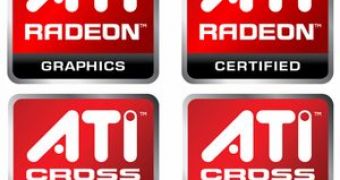AMD has just issued a memo for its technology partners, detailing upon the current progress with the upcoming graphics chips in the RV770 family. According to the memo, the chip manufacturer will release the RV770-powered graphics cards in late Q2, which means they will be ready before the Computex show starts.
The RV770 chips will replace the RV670 offerings on the high-end market. The exact technical specifications are still unknown, but it is rumored that the RV770 graphics chip will come with up to 640 stream processors and 32 texture map units / ROPs.
The chip will function at frequencies that won't exceed 1 GHz, but they will be substantially higher than the previous RV670 graphics cores. The chip's yield rate is as much as 71%, and, according to the leaked specification, the upcoming cards will come with GRRD5 memory.
The new type of memory will be able to deliver insane frequencies that can reach 2.5GHz / 5GHz effectively, which is more than two times faster than the maximum frequencies for the GDDR4 memory. GDDR5 promises some crazy frequencies all the way up to 2.5GHz / 5GHz effectively, which is more than two times faster, as compared with what you can achieve today with GDDR4.
The final GPU revision on the ready to retail cards will be A11. Moreover, it is alleged that the card-to-card performance would result in some 40 percent gains for the RV770-based cards.
AMD is currently focusing on the multi-core graphics technology, and the recent availability of the CrossFireX technology is part of a greater plan than offering the best bang ratio when it comes to video gaming.
The IT industry expects that the upcoming versions of the Catalyst driver pack to bring significant improvements in respects of multi-GPU scaling. Given the fact that the R700 family is based on the R600 architecture with its multi-GPU orientation, it is assumable that the chip manufacturer will also focus on the upcoming chips' multicore part.
When the chips are finally available, they will be commercially known as the Radeon HD 4000.

 14 DAY TRIAL //
14 DAY TRIAL //